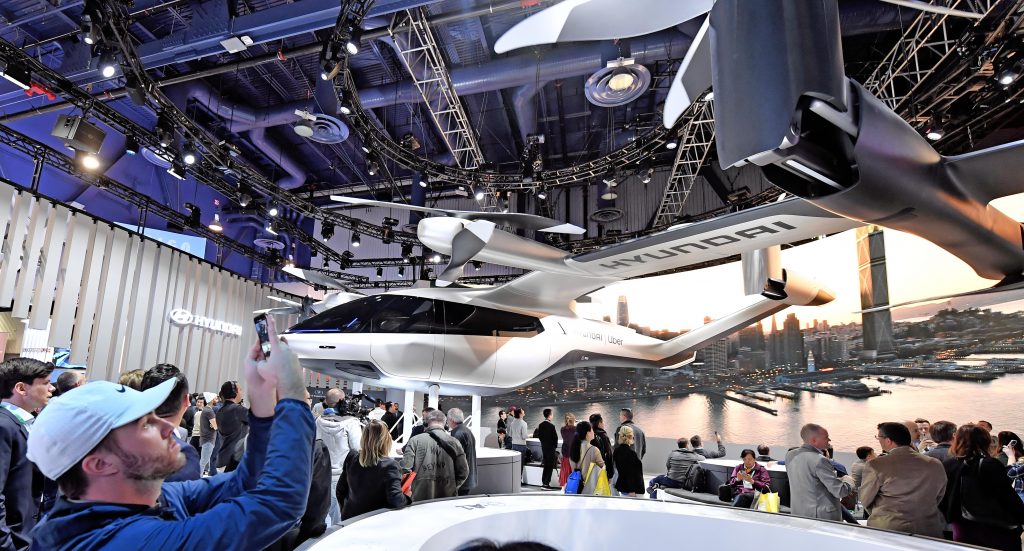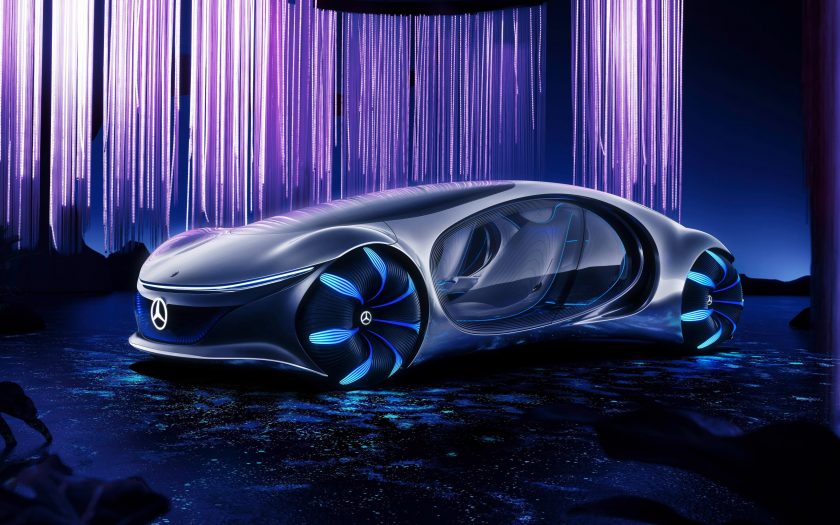Prepared by Tim Stevens for The Road to 2020 World Car Awards
The show “floor” at CES continues to expand and evolve, gobbling up greater and greater stretches of the city of Las Vegas. Likewise, the tenor of the event itself also continued to evolve in 2020. While major manufacturers like Intel pulled out of the show, a new generation of smaller, fresher brands stepped in to keep the show as dramatically chaotic as ever.
Chaotic could definitely describe 2020’s automotive offerings. Centred around the North Hall at the Las Vegas Convention Center, as per usual, many major manufacturers like Ford, Audi, and Mercedes-Benz chose to have a presence at this year’s show, displaying everything from near-term aftermarket upgrades and stereo equipment to fanciful show cars the likes of which most manufacturers swore off years ago. Even Lamborghini had a presence at this year’s show.
At the forefront was Mercedes-Benz, which showed off the Vision AVTR concept. The name is a strong nod to the Avatar film, currently the highest grossing movie of all time with $US2.8 billion earned worldwide. The first of its many planned sequels is still a few years off, but to stay ahead of the curve, Mercedes partnered with James Cameron to create a concept “inspired” by the films.
How so? Well, this is a car supposedly able to read your biometric information, like your heart rate, in a way conceptually similar to how the steeds in Avatar interface with their Na’vi riders in the films. That’s fun in theory, but far more significant are the sustainability aspects of the vehicle, including a fully recyclable interior and a battery free of heavy metals that’s said to be compostable.
That latter bit sounds like fantasy, but it’s conceptually possible thanks to research done with IBM. That company’s fledgling quantum computers were used in a project with Mercedes-Benz to determine the ideal chemistry for automotive batteries of the future. This kind of consumer electronics/automotive crossover is exactly what we love seeing at CES.

As to what the attendees love seeing, it’s usually some sort of flying car. The things have been in the works for decades, but Uber Elevate is saying it wants to have early models flying within the next three years. To that effect, both Hyundai and Bell showed off concept VTOL aircraft intended for use with the Uber Elevate service. That service will be built around multiple hubs in major cities, where flying craft will whisk you over the gridlock to your suburban destination.
Hyundai’s model, the SA-1, is all-electric and offers just 60 miles of range, but that’s enough to get over the worst of the traffic. Meanwhile, a recharge takes just five minutes. That means that by the time one load of five passengers has exited and the next has been loaded, the craft will be ready for the return leg.
Interestingly, these vehicles will be human-piloted, Uber wanting them in the air as soon as possible, hopefully avoiding the required development and legislative debates that will surround fully autonomous airborne vehicles. Regardless, while the technology for these aircraft may be ready within three years, many questions remain about just how they will be implemented within major metropolitan areas.
On the earth-bound, two-wheel front, Damon Motorcycles showed off their all-electric Hypersport HS. This $US25,000 bike will do 200 mph thanks to a 200 horsepower (150kW) engine and has a highway range of 200 miles. Those are impressive specs, but more impressive is the bike’s ability to shape-shift, raising the bars and lowering the pegs to make it more comfortable for commuting.
But as to who made the biggest splash at CES, it was surprisingly Fisker. Last year the company debuted a fanciful concept called EMotion, a gull-wing beauty that was priced too high and intended for release too far into the future to resonate with the market. In 2020, Henrik & Co. were back with the Ocean, a little SUV that practically stole the show. This sub-$US40,000 electric crossover was a gangbuster hit among those reading the CES news.
The big story here is the price, $US37,499, undercutting even the Tesla Model 3. But, with a promised range of 250 to 300 miles, a fully vegan and recyclable interior, plus a design that’s simple and clean but striking, this looks like it could be a compelling package – if it actually hits production on schedule.
Fisker indicated the car will enter production next year and went so far as to start taking $US250 deposits. The company has not yet confirmed how many potential owners put down their money.
THE ROAD TO 2020 WORLD CAR AWARDS began in Frankfurt, September 10 2019 and will end at the New York International Auto Show on April 8 2020.
CES showcases more than 440 exhibiting companies, including manufacturers, developers and suppliers of consumer technology hardware, content, technology delivery systems and more; a conference program with more than 250 conference sessions and more than 17,000 attendees from 160 countries.
This article was prepared by Tim Stevens, editor-in-chief of CNET’s Roadshow and World Car director).
